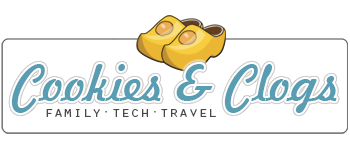When it comes to cleaning, few products are as effective as bleach. But, for some, it can be slightly intimidating to use. Why? Well, if you’ve ever bleached the color out of your favorite clothes or, say, a small section of carpet (*cough* thanks unnamed guest) then you know what I’m talking about. Bleach is a potent product and there can be some anxiety if you don’t quite know how best to use it. I had the opportunity to chat with Clorox’s cleaning and laundry expert, Mary Gagliardi aka Dr. Laundry. She helped dispel some common myths about cleaning with bleach and addressed my concerns as well.
Cleaning with Bleach 101 — Materials
According to Dr. Laundry, the active ingredient in Clorox Bleach is sodium hypochlorite. It works as an oxidizer to clean, sanitize, and disinfect a variety of surfaces. Since you should always dilute bleach before use, it is also economical. Just a little bleach can go a long way to keeping your home and your clothes clean. Can bleach be used on everything? Almost, but no. Here’s a simple guide to which materials you can and cannot clean with bleach.
DO use on:
- Hard, non-porous materials (i.e. vinyl, linoleum, plastic)
- Synthetic or plant-based fabrics (i.e. cotton). Printing on fabric is almost always bleach-safe.
DON’T use on:
- Porous materials (i.e. marble, aluminum, silver, chipped enamel, non-stainless steel)
- Materials with animal fibers (i.e. wool, silk, mohair, leather) or spandex
Once you know what surfaces you can use Clorox Bleach on, the next step is finding out how best to use it.
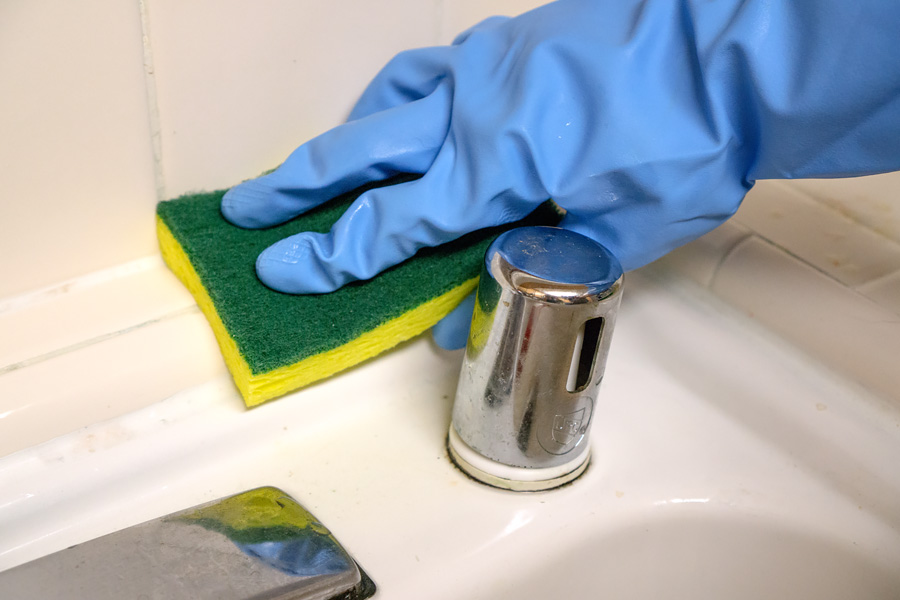
Cleaning with Bleach 101 — Cleaning & Disinfecting
Not all cleaning products are made equal. Just because a product removes dirt and grime, doesn’t mean it disinfects the surface from germs too. To make that claim, the product must have a registration number issued by the US Environmental Protection Agency (EPA). This requires the manufacturing company to conduct tests and submit results including concentration, time, types of bacteria or fungi, age of the product, use instructions, etc.
Clorox is proud that its Clorox® Regular-Bleach is EPA registered and is recognized as killing 99.9% of bacteria. That’s pretty stinkin’ impressive. Some try to tout vinegar as an equal alternative but it can only kill about 80% of germs at full strength. If diluted in a homemade solution, its effectiveness drops another 5-6% less. That is so not okay! But why not 100%? I really wanted to know about that 0.1%! Apparently, it’s practically impossible to wipe out everything in a home setting (as opposed to a sterile hospital setting). So, 99.9% is basically as good as you can get within public health standards. Okay, that totally makes sense.
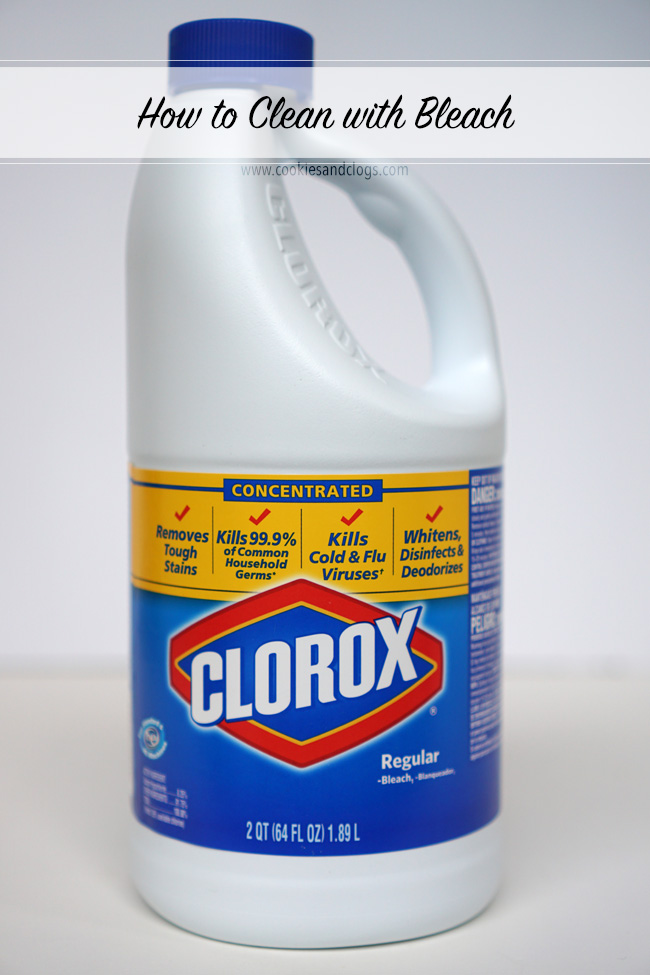
I mentioned before that, when cleaning with bleach, it should always be diluted. Depending on your goal, though, ratios and cleaning methods do change.
Around the House (i.e. kitchen, bathroom, high-touch surfaces):
- Use 1/2 cup of Clorox® Regular-Bleach in 1 gallon of water.
- Thoroughly wet surface with the solution and allow it to remain on the surface for 5 minutes.
- Rinse with clean water and dry.Optional: To remove mold and mildew, leave the above solution on area for 10 minutes then rinse and dry.
Delicate Jobs (i.e. food surfaces, baby items, cutting boards):
- Wash with regular soap and rinse.
- Use 2 teaspoons of Clorox® Regular-Bleach in 1 gallon of water.
- Soak washed items for 2 minutes in solution or pour through bottle nipples.
- Drain dry.
Now you know the ideal ways to clean AND sanitize / disinfect your home. Plus, with cold and flu season here, we need all the help we can get to reduce germs from spreading about. Let’s face it — while families love to share things with one another, no one wants to be the next in line for getting sick!
Cleaning with Bleach 101 — Washing Clothes
Okay, here’s the issue that might make you nervous when cleaning with bleach. Dr. Laundry, obviously, had a lot of great tips for safely using bleach when washing clothes. For an average size load, add 1/2 cup of bleach in the bleach dispenser. You can increase that to 3/4 to 1 cup for a full load in a top loading large capacity washer. Front loading machines sometimes use less water so adjust the bleach ratio accordingly. Instead of washing a super full, opt to divide that into two loads for a better clean.
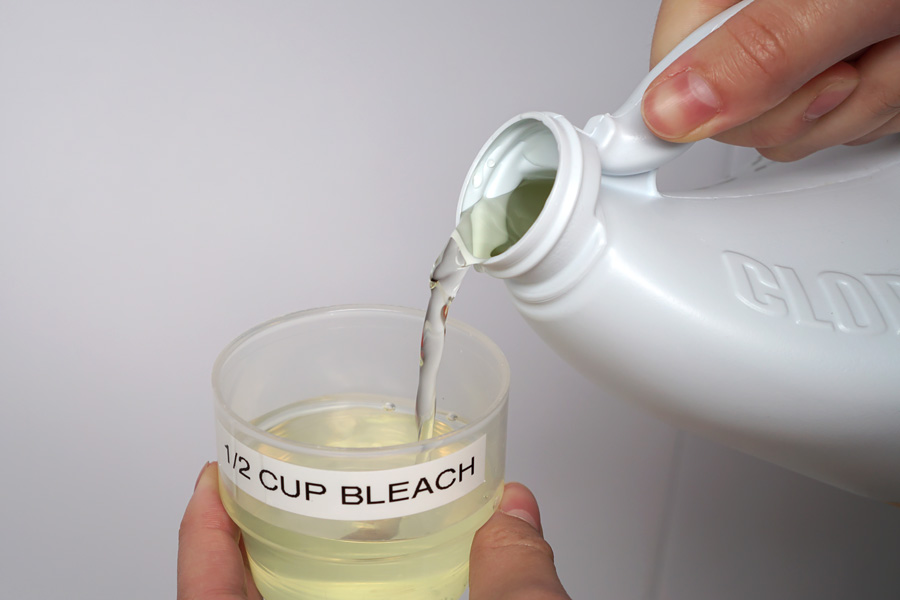
Many washable clothes are actually color safe, even if the manufacturers slap a “no bleach” tag on it. Sometimes, it’s an easy way to cut corners and not have to go through the process of testing and labeling each product or color line. But, just in case, you’ll want to test your clothes or bath towels for colorfastness. I’ve always wondered what that meant exactly. Dr. Laundry broke it down simply.
Bleachability Test:
- Mix 1/2 teaspoon Clorox® Regular-Bleach and 1/4 cup water.
- Apply to hidden part of the item such as an inner hem, inside a pocket, or under collar.
- Rinse and check for any color changes.
If you do happen to find yourself face to face with any color boo-boos, Dr. Laundry suggests the use of permanent markers. What a coincidence! (See my quick fashion fix post from last month.) Black is the easiest to fix but many art stores offer a wide range of colors. If you happen to find a pen that matches just right, you’d probably want to buy it for later use. Ink lightens when washed so it’s good to have the pen on hand for touch-ups.
Cleaning with Bleach 101 — Clean & Sanitize
As you can see, cleaning with bleach isn’t scary at all. If you know what to use it on and how much to dilute the solution, Clorox Bleach is an effective product for cleaning and disinfecting. You’re home won’t just look clean but it will actually be clean! Your laundry will also benefit from the stain-fighting and sanitizing effects of bleach. With kids, we know how odors and stains find their way into everything they touch! If you have any other questions about using Clorox Bleach, feel free to email Dr. Laundry at [email protected] with your questions or concerns.
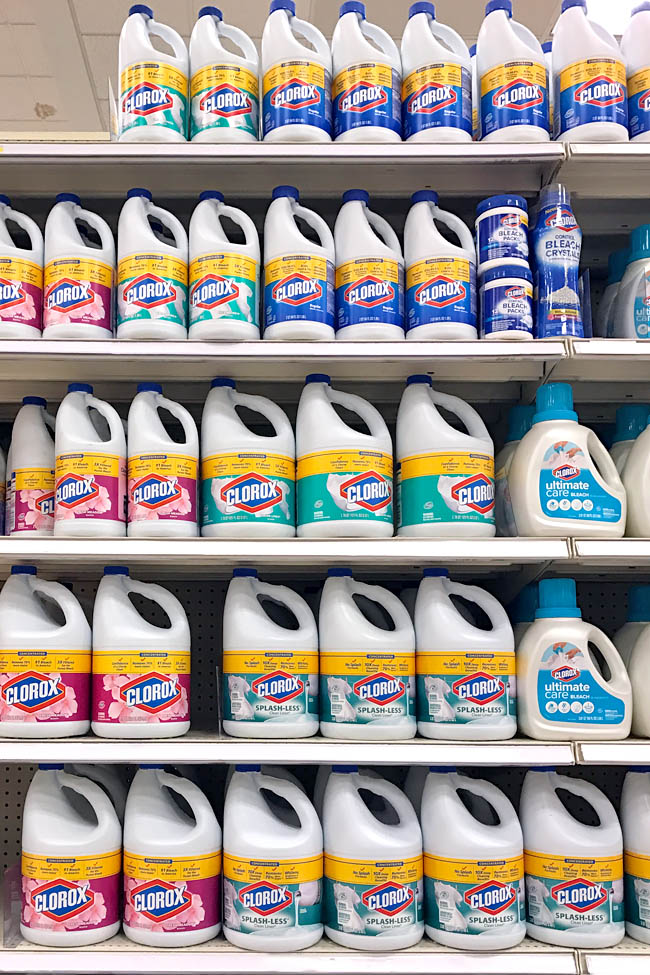
Do you use bleach regularly around the house and in the laundry?
This post is being compensated by The Clorox Company as a part of the Clorox Influencer program and as part of my participation of being a Clorox CLXChampion.
